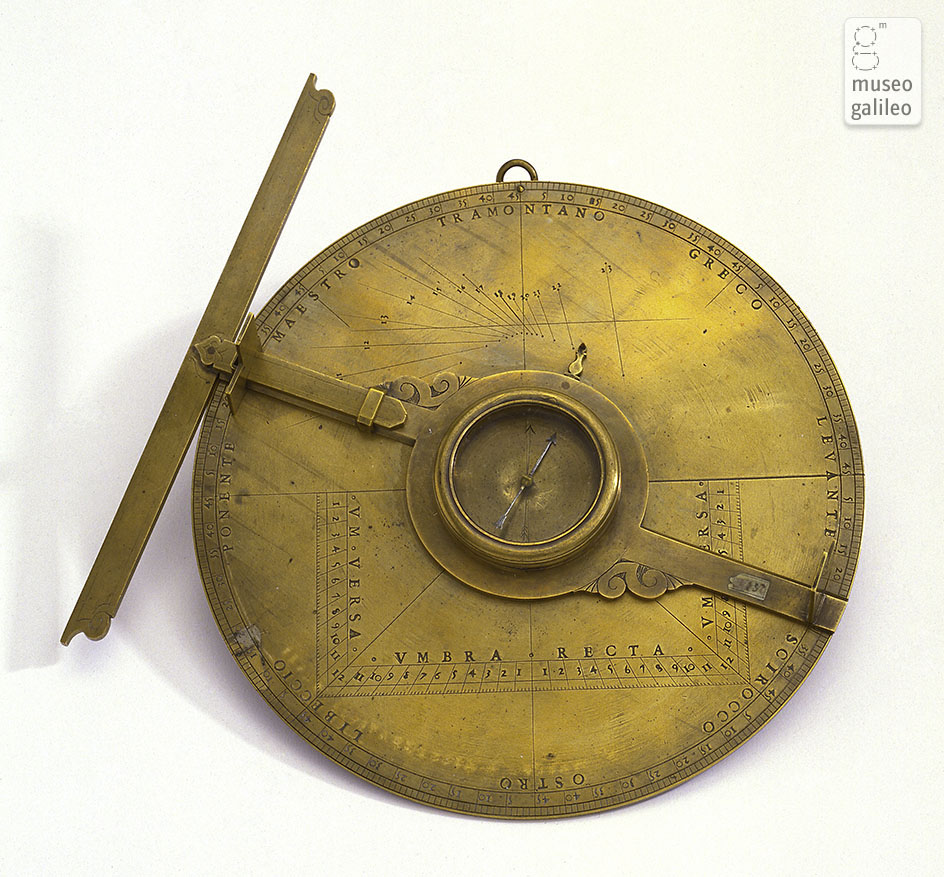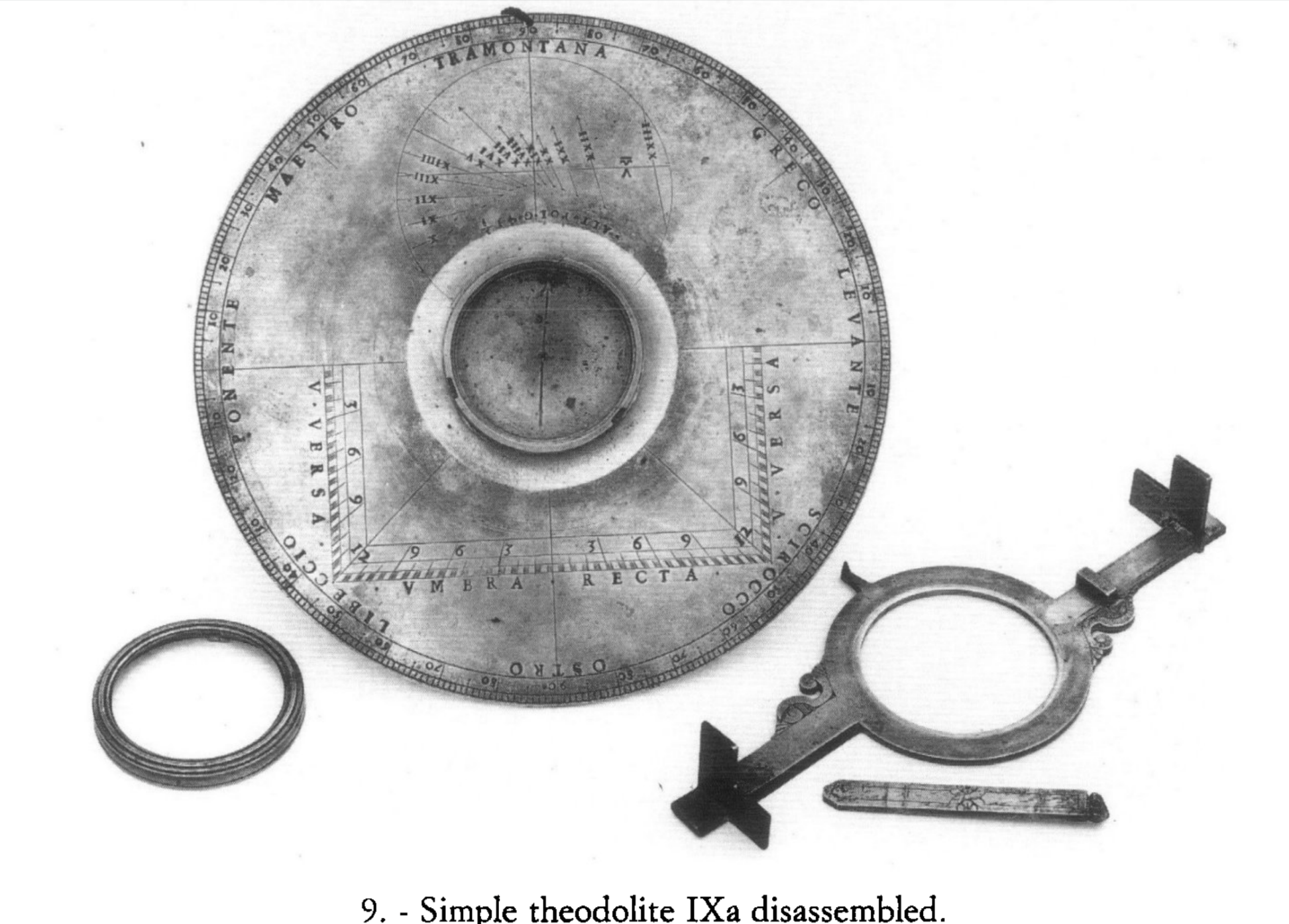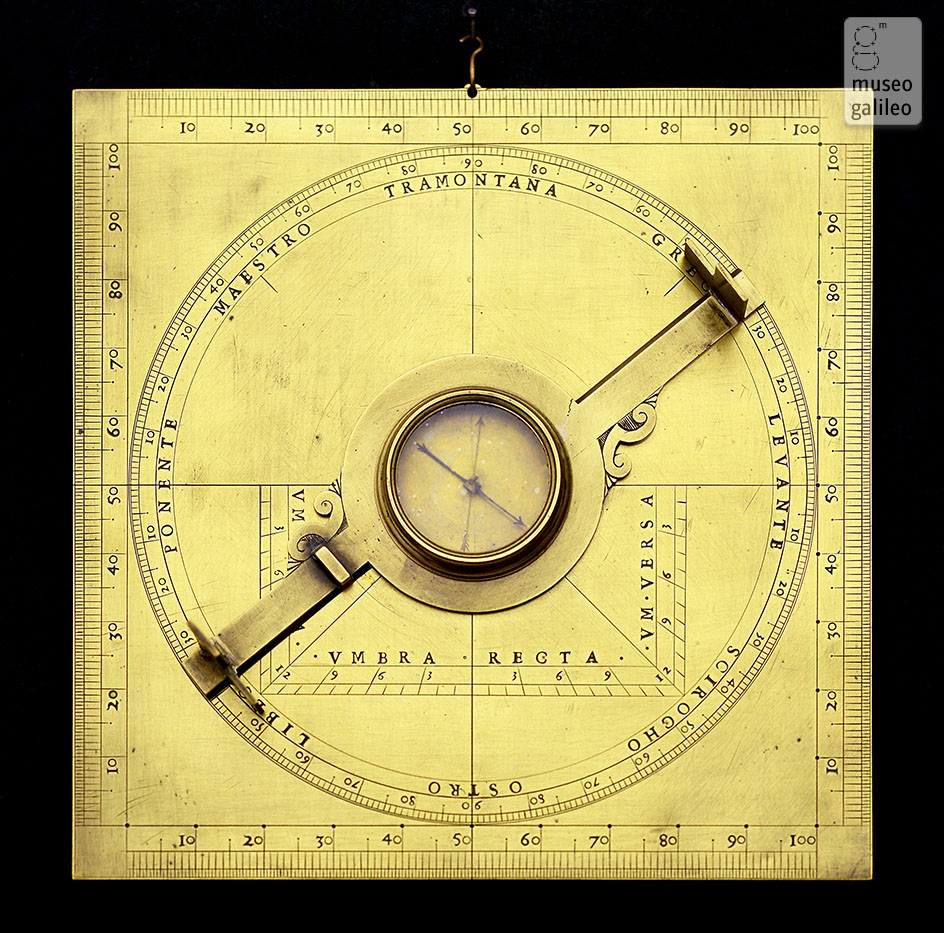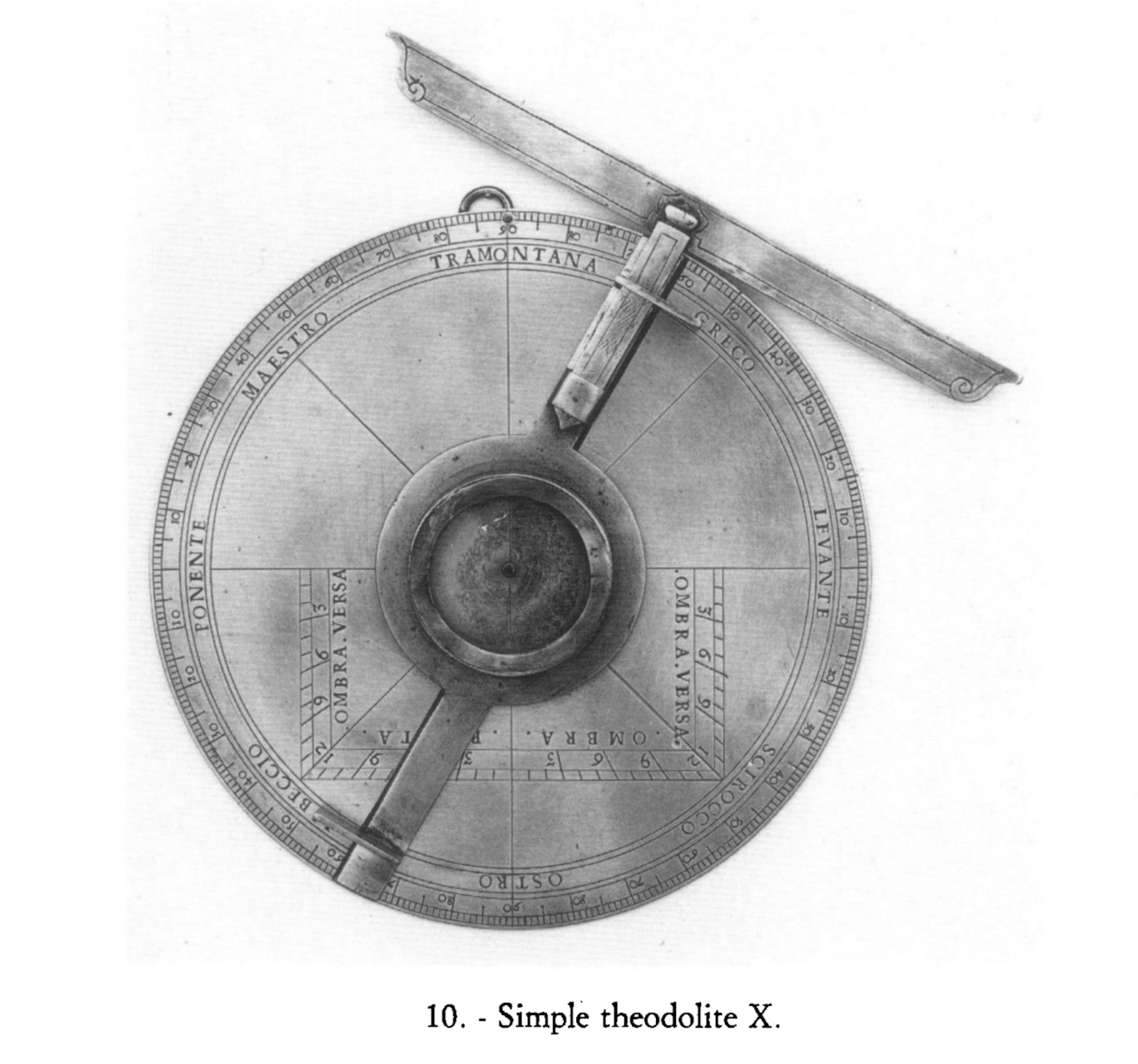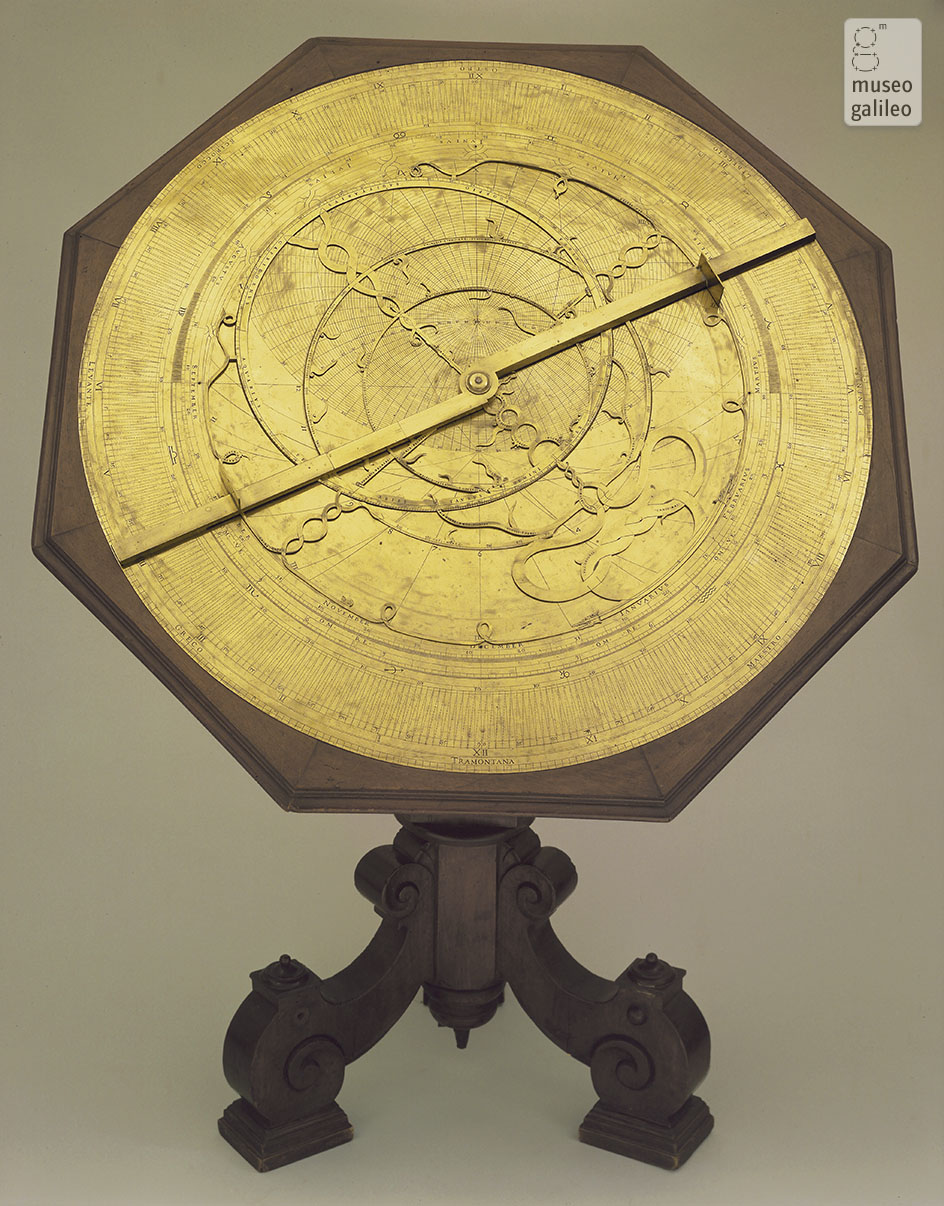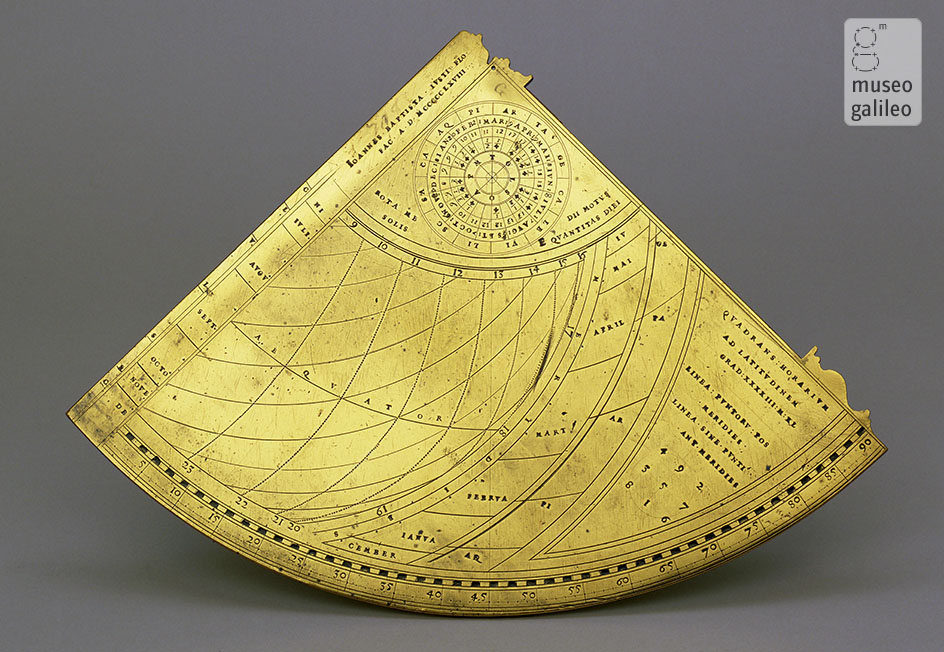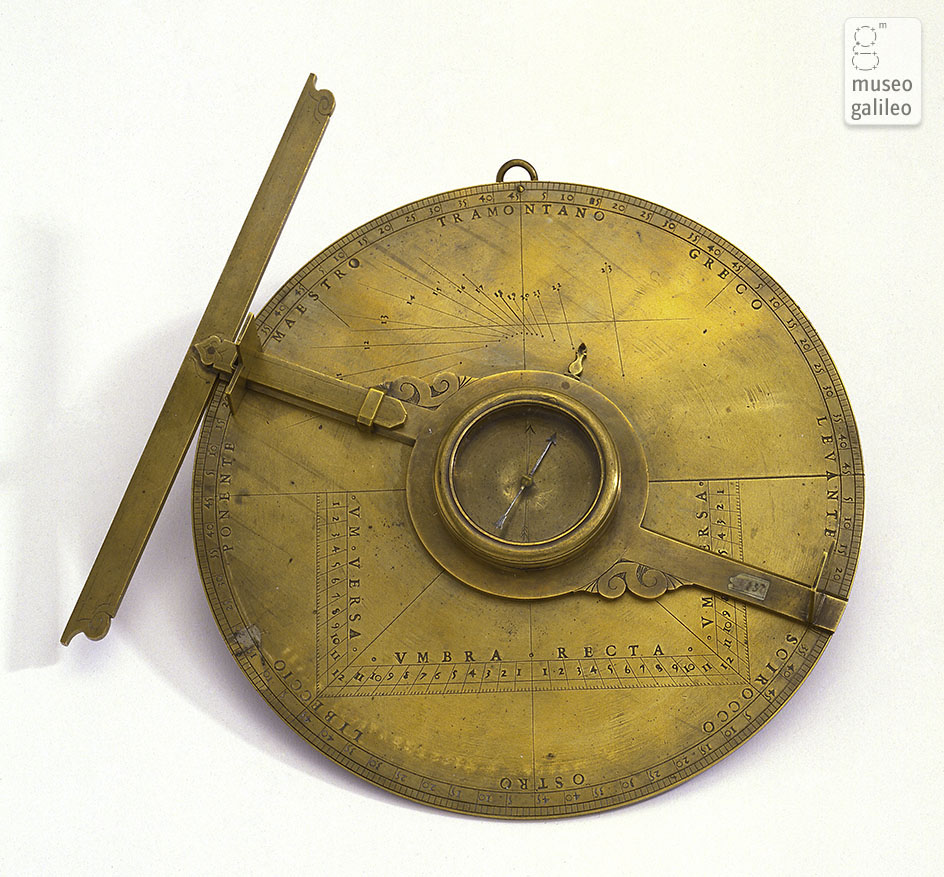
GIOVAN BATTISTA GIUSTI
Giovan Battista Giusti made and signed a handful of scientific instruments in Florence Italy from about 1556 to circa 1575. There is very little know about Giusti other than that - there are no records of when he was born or died, who is parents were, or what he did during his life other than make instruments.
Gerald L'Estrange Turner was a well-known authority on scientific instruments for decades, and published numerous books and articles on the subject. While researching instruments at the Museo Galileo in Florence Italy, Turner noted various punched letters and numbers that were consistent (made by the same punch set) across a number of signed and unsigned instruments. Turner's big discovery relates to Giusti. Turner published an article about his Giusi, and here is Turner's Summary of his Giusti research:
"A group of twenty-six, mid-sixteenth-century Italian scientific instruments has been brought together as being the product of a single Florentine workshop. The instruments are linked by characteristic punched letters and numbers, as well as other stylistic features. Four of the instruments, three quadrants and a nocturnal, bear the signature of the maker, Giovan Batista Giusti. To these are linked a group of surveying instruments and a group of nine astrolabes, unsigned but some dated. Two astrolabes bear the name of Egnazio Danti, cosmographer to Grand Duke Cosmo I of Tuscany. A member of the astrolabe group is the very large instrument at Florence, commonly but erroneously described as the «Galileo» astrolabe. All of these instruments are now identified as having been made in a single workshop associated with the name of Giusti. The introduction of new punches to replace those that were worn out makes it possible to postulate dates for some of the instruments, notably the «Galileo» astrolabe, made c. 1569. The workshop was operative over a period of some twenty years from 1556."
Turner, THE FLORENTINE WORKSHOP OF GIOVAN BATTISTA GIUSTI, 1556-c. 1575, Published in Nuncius, Jan 1995. (The only copy of the article I could find was a download on Brill.com that cost $35).
Unsigned instruments that were made using the punch sets in Giusti's workshop are said to be "Attributed to Giusti".
Giusti made some beautiful instruments if you take a good look at Turner's article. At the bottom of this webpage I included pics and links to two of Giusti's instruments held in the Museo Galileo.
I'm focused on the surveying instruments made by Giusti however. Turner found 5 Theodolites that were made in Giusti's workshop. Turner's article describes all 5 Theodolites but only includes pictures of 4. None of the Theodolites were signed or dated by Giusti. The Giusti Theodolite (Attributed) that I'm offering for sale is NOT one of the 5 Theodolites examined by Turner.
One of the Theodolites includes some critical dating information - The Botti Theodolite shown on the left below.
The Museo Galileo website indicates that the Botti Theodolite was made in the 17th century. The Museo Galileo determined the 17th century made date based on a Matteo Botti that lived from 1570 to 1621. This date is likely wrong given information that has come to light after the Museo Galileo put together its webpage on the Botti Theodolite.
In his recent book regarding the surveying instruments held by the Museo Galileo, Jm Bennet characterizes the Botti Theodolite as a late 16th Theodolite (See Bennett's Catalogue of Surveying and Related Instruments (2022) at page 43. I assume that Bennet revised the made date based on better information regarding the original owners - "Matteo E GiovanBattista Botti". These names are engraved on the back of the Botti Theodolite.
The Museo likely had the wrong Matteo Botti. There are some references to Matteo E Giovan Battista on the internet, and two critical dates emerge. Matteo and Giovan bought property together in 1569, and they both had passed away by 1588. Thus, the Botti Theodolite fits nicely with Turner's timeframe for the Giusti workshop of 1556 to Circa 1575. I list the Botti Theodolite as made Circa 1575, but it could have been made earlier than that.
Of the 4 Theodolites pictured in Turner's article, two are VERY similar (including the Botti Theodolite) and the two others are quite dissimilar. My Theodolite is nearly identical to the two VERY similar Theodolites, especially to the Botti Theodolite. Note that the Botti Take a look at the first three pics below (the Botti Theodolite, My Theodolite, and a third Disassembled Theodolite). You can see a higher resolution pic by clicking on the small pic provided. Note that My Theodolite and The Botti Theodolite are the only two instruments that spell Tramontano with an "o" at the end rather than an "a" at the end.
Based on how closely My Theodolite matches the other two Giusti Theodolites, especially the Botti Theodolite, I am quite comfortable saying that My Theodolite was almost certainly made in Giusti's workshop around the same time as the Botti Theodolite. Which is why I believe Giusti made My Theodolite Circa 1575 as well.
Giusti's Theodolites look like the Theodolites found in Cosimo Bartolio's 1564 Book (published in Venice). Click here to see the 1614 edition of the book. I posted some pics below of the 1564 Book Title Page and a few of the instruments shown in the 1564 book. I don't know if Bartolio influenced the design of Giusti's Theodolites, or if Giusti influenced Bartolio.
Two Other Giusti Theodolites
Cosimo Bartoli 1564 Book With Theodolite Illustrations


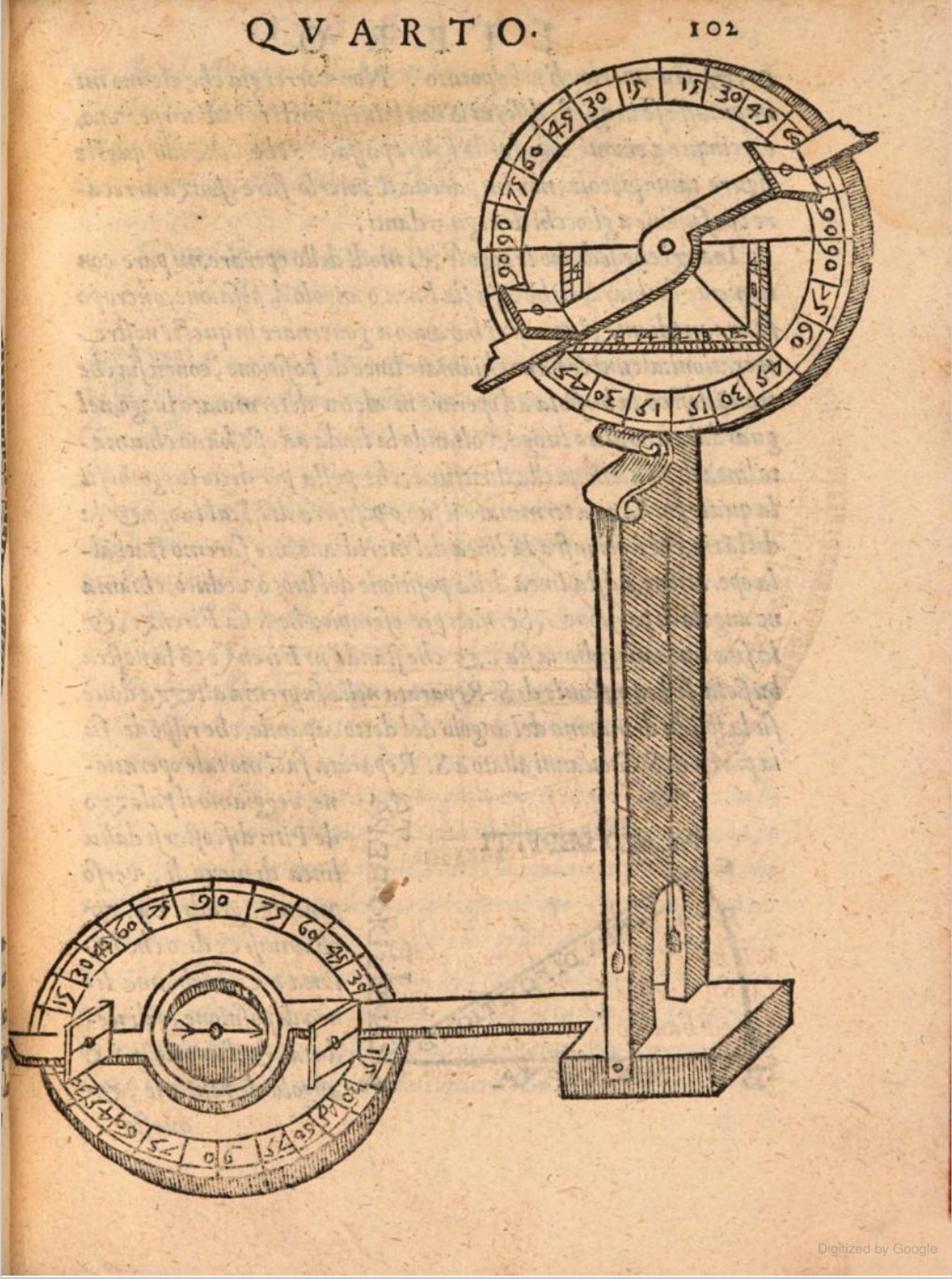

Some Other Giusti Instruments
© 2020 Russ Uzes/Contact Me
